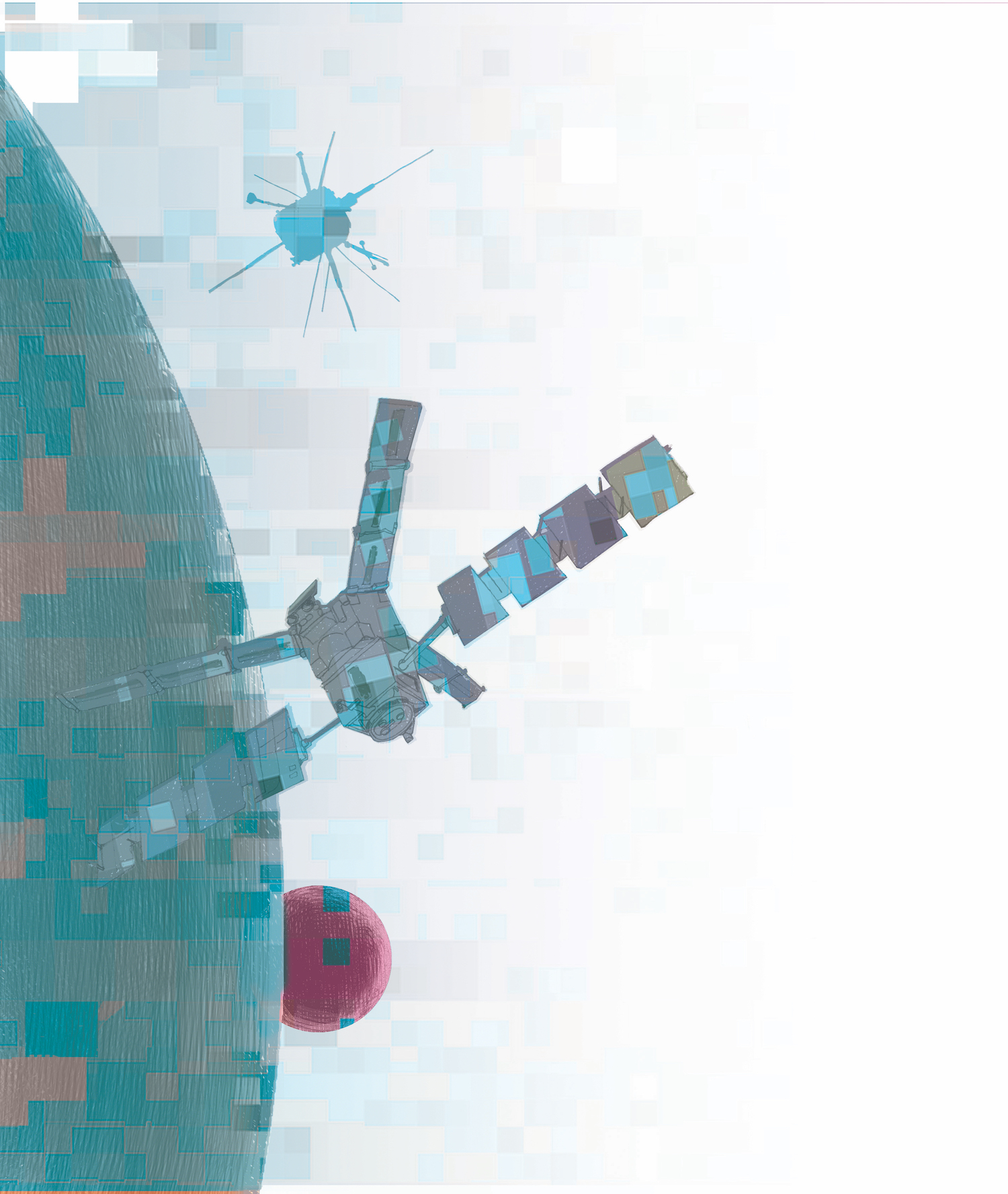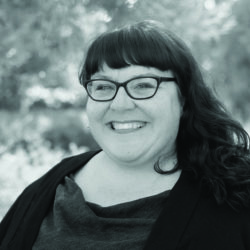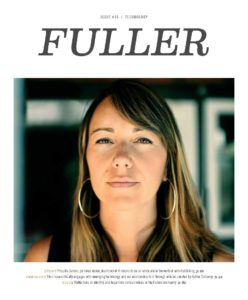
Access Services at Fuller is an office tasked with making “accommodations” in our courses and programs to make them accessible to students with disabilities, ongoing medical conditions, or temporary impairments (whether from surgery or injury). However, it is up for discussion whether we are accommodating the student or the inaccessible structure of the course or program.
Accommodations include things like texts in accessible formats for students who are blind; captions on videos for students who are d/Deaf or have hearing impairments; extra time on exams for students who have certain types of learning disabilities; and adjustments to any other course elements that need them. This kind of logistical effort to remove barriers and make our programs accessible to students who learn and demonstrate learning in diverse ways is the most fundamental level of accessibility. It is also legally required for any school whose students receive federal funding, as ours do.
But here at Fuller, we don’t provide accessibility primarily because we are legally bound to compliance (though this is certainly true). Creating an accessible learning environment goes beyond these kinds of responsive, individualized plans for modifying course components; it also means being a deeply Christian community that recognizes how much we need the gifts and full participation of each member of the body, understanding accessibility as an aspect of hospitality, welcome, and following in the way of Jesus.1
Beyond logistical modifications for accessibility of physical and pedagogical structures, creating real access means being a community that recognizes the theological importance of accessibility, and values the presence, experience, and God-given gifts of our students and other community members with disabilities and diagnoses of all kinds. Without reframing how we think about disability and access, we might incorrectly believe that accessibility simply benefits the students who directly need it, when in reality it benefits our whole community. Or we might regard accessibility-related tasks as chores we do only to meet legal requirements, or out of pity for people who we regard as lesser in some way. These ways of framing the issue create inaccessible, inhospitable learning environments.
As the person who currently runs the Access Services office, I strive to increase Fuller’s overall accessibility in two directions. One direction involves individual supports like connecting students (and faculty) to technology, apps, and other strategies that allow them to take in information and demonstrate learning using multiple senses and modalities. Quite a few delighted exclamations have followed my informing people that Adobe—a widely used computer program for reading PDF documents—comes with a built-in feature to “read out loud,” so they can access the words auditorily instead of, or in addition to, visually. This helps students who struggle maintaining focus when reading, students who have various kinds of visual impairments, and people who simply retain information better by hearing it.
In pursuit of the other direction of increasing Fuller’s accessibility, I draw upon my PhD in Christian ethics, focusing on disability issues and what it means to engage the matter of accessibility in a way that reflects our deepest values as Christians. These values include the belief that every person is created in the image of God and essential to the body of Christ with an important, God-given vocation. Hospitality is a practice we engage in to embody these values in our communities.
Hospitality and extending welcome, particularly to people whose presence and gifts have been previously excluded, is one key part of what it means to follow in the way of Jesus. We live out our faith commitments through hospitable community, making the body of Christ more whole by intentionally including all the parts. But a community cannot be hospitable without being accessible to everyone who’s been invited. Accessibility is a necessary and foundational aspect of a hospitable community. If a person who uses a wheelchair or mobility device cannot smoothly join any space, if a person who has a visual impairment is not able to receive the information conveyed in the types of images or lecture slides used in class, if a person with a chronic pain condition cannot be given some degree of flexibility on deadlines during an unexpectedly lengthy flare—in short, if the fundamental physical and pedagogical structures of our educational institution are inaccessible—then we miss the opportunity to practice other kinds of hospitality.
Fuller needs a communal mindset that acknowledges all of our members, with every diagnosis and disability label, as possessing gifts and questions vital to our thriving as a truly Christian learning community. In terms of hospitality tools, we can utilize technology to make that community accessible, both in person and online. In our in-person learning spaces, Fuller is in an important moment now as we imagine how widespread changes in our campuses can reflect real accessibility and hospitality. There will be legally required architectural accessibility at the most basic level—ramps, elevators, accessible restrooms, and the like. But I wonder what it would be like to actually prioritize accessibility from the beginning? Can we find a design that is cost-effective and prioritizes radical accessibility as much as it prioritizes aesthetics?
That is the whole idea behind universal design, an approach that uses design and technology to create an accessible environment for people who navigate the world in myriad ways.2 The Ed Roberts Campus at University of California, Berkeley, is widely known as a beautiful, functional space that takes universal design and accessibility seriously.3 The campus was named after a student who attended UC Berkeley in the 1960s who had polio, slept in an iron lung, and revolutionized the independent living and disability rights movements. The elevators at the Ed Roberts Campus are one example of universal design. Each elevator is large enough to fit multiple wheelchairs at a time, has buttons that can be pressed with wheelchairs, crutches, hands, or feet, and also offers braille and voice accessibility. A large circular ramp ascends from the first to the second floor, so wheelchair users can move between floors even if the elevator is not working and can leave in an emergency when elevator use is unsafe. Further, the bathrooms have additional features to make them more accessible to a variety of users. This space doesn’t just meet the requirements of the Americans with Disabilities Act, it exceeds them.
I think also of St. John Neumann Catholic Church in Lilburn, Georgia, where a priest was so deeply committed to creating an accessible worship space that he led the community in installing a pulpit, lectern, and altar (their table for the Eucharist) that were automatically adjustable by height, allowing clergy who used wheelchairs to easily preside over their services.4 Church spaces often make some attempt to create accessibility for congregants, but we see less of this addressed in a church’s leadership spaces and platforms. This attention, or lack thereof, communicates something about what we imagine our leaders to be like. I wonder how as an institution of higher education, especially as we imagine the architecture, furniture, and technology in a new campus, we might think about not only our students with disabilities, but also staff, administrators, and faculty who will be more deeply welcomed by a thoroughly accessible environment.
Fuller’s Pasadena campus has a few buildings that are readily accessible and many others that are not. But making it technically possible for folks who use wheelchairs or have difficulty climbing stairs to get to every part of the building does not mean a space truly feels accessible or welcoming. Elizabeth Staszak, an MDiv student with some physical disabilities, was recently invited by Assistant Professor of Christian Ethics Erin Dufault-Hunter to speak about some of her experiences in a course centered on issues of life and death. As an assignment, Elizabeth invited the students in the class to take only the accessible routes as they navigated Fuller’s campus in the week before her lecture. As the group reflected on that experience, student after student mentioned how much less convenient it was for them to get from place to place, and how even when they could get where they needed to go, often they needed to walk much further to find a route that didn’t include stairs. A broad group consensus arose that it ought not to be this way.
Creating hospitable learning environments does not apply only to physical spaces, but to spaces for our ever-growing community of online learners as well. For some students (and faculty), especially those who deal with chronic illnesses or other kinds of unpredictable disabilities or health conditions, an online course can be more accessible than going to a physical campus to learn. An in-person class meets in a particular place at a particular time, and getting to the classroom location requires an expenditure of physical energy and effort. For people who may need to save their physical energy for other things, or who may need to work around their often-unpredictable levels of physical pain to determine when they are able to focus on a lecture or discussion, an online learning environment can allow deeper and more regular engagement. This way, a student may decide to watch the lecture video in their pajamas at 5 a.m. on a Saturday, the time when their energy levels and ability to focus are best that week. An online environment offers a level of flexibility that allows some people to participate in seminary courses who may have otherwise been unable. When we think of accessibility in this way, we see that what may initially appear to be unusual or nontraditional ways of accessing seminary education can actually be ways of living as a radically inclusive community in the line of the followers of Jesus—a beautifully diverse group of people, all on the road together.
There are further ways technology aids us in making an online learning environment a welcoming and accessible space for all teachers and learners. Thanks to current technology, it is becoming ever easier to create captions for videos, provide multiple options for how students can participate in group discussions (written post, audio clip, video clip), and offer real-time virtual office hours for distance-learning students who may need a space to verbally ask direct questions of clarification. These methods are relatively easy ways for Fuller faculty and staff to practice hospitality.
As an institution forming Christian leaders to live out their vocations proclaiming the grace and power of God in all the world, we should also provide models of faithful hospitality, inclusion, and accessibility these leaders can take with them from Fuller. How beautiful would it be if the churches, ministries, businesses, and other communities led by our graduates truly embodied this? Being faithfully accessible will benefit Fuller directly as we receive the gifts, participation, questions, and presence of students, staff, and faculty of all abilities in our own community. But we can also carry this practice of Christian welcome and hospitality into all the world through our community members who have been formed to value it and taught—through direct experience—how to practice it.
ENDNOTES
-
B. M. Fox, Disability and the Way of Jesus: Holistic Healing in the Gospels and the Church (Downers Grove, IL: IVP Academic, 2019).
-
For more information about universal design (in terms of built environments) visit http://universaldesign.ie/What-is-Universal-Design/The-7-Principles/; for information about universal design for learning, see A. Meyer, D. H. Rose, and D. Gordon, Universal Design for Learning: Theory and Practice (Wakefield, MA: CAST Professional Publishing, 2014).
-
“Ed Roberts Campus/LMS Architects,” (March 28, 2011). Accessed 17 Jun 2019. ArchDaily, https://www.archdaily.com/122507/ed-roberts-campus-leddy-maytum-stacy-architects/.
-
S. O’Kayne, “Parishioners Not Surprised Pastor Selected as Bishop,” Georgia Bulletin, April 11, 2013, https://georgiabulletin.org/news/2013/04/parishioners-not-surprised-pastor-selected-as-bishop/.


